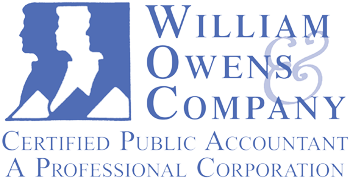
There are three financial statements that every company needs to understand, review and produce, on an annual basis, at a minimum. These consist of the Profit and Loss statement (P&L), Balance Sheet (BASH) and the Cash Flow statement. The profit and loss statement, also commonly known as the income statement, shows the changes in the company’s profitability over the course of time. The profit and loss can be reported in either the Cash or Accrual method. The cash flow statement is similar, however it shows the company’s income and outlays in a cash methodology only. The balance sheet reports the company’s assets and liabilities in a specific snapshot of time.
The P & L reports all of the income, or revenue, that the company receives through its normal course of business. This is often known as the “top line.” You subtract the costs associated with doing business, which can consist of Cost of Goods Sold for product related businesses, and ordinary operating expenses. Once loss is subtracted from the “top line” income, the end result is known as the “net income” or “bottom line” and is the profit, or earnings of the business. The profit and loss statement is often used to calculate metrics which include gross profit margin, product profit margin, operating profit margin, net profit margin, and operating ratios. Operating margin measures how much a company makes on each dollar of sales after paying for the variable costs of production (raw materials and labor), but not the operating costs, interest or taxes associated with the products. The net profit margin is the percentage of revenue remaining after all the operating expenses have been deducted from the company’s total revenue. The operating ratio shows the company’s overall efficiency by comparing the total operating expenses to net sales. As the company moves through the year, it is important to keep track of the net income to maintain a good pulse on the company’s spending practices.
The balance sheet is used to show both what the company has as its resources, and what it owes at any given moment. It also shows what the company’s owners or investors have put into the company. The goal is to have more assets (resources) than the company has liabilities (dues) and equity (owner’s stake) combined. This is because, if the company were to close, the assets would be used to pay off its liabilities and the owners. The flip side of this is that the company uses its borrowed monies (liabilities) or owner’s investments (equity) to purchase assets. Therefore, the ratio of assets to liabilities and equity is important to keep track of. As the balance sheet is a snapshot in time, it cannot inform the company of its trends, but can provide a look at its current overall health. It is useful in determining the company’s debt-to-equity ratio. The D/E is calculated by dividing a company’s total liabilities by its owner equity. This is used to determine the company’s financial leverage. In other words, how much of the company’s operations are being financed through debt versus income. The accounts can vary by entity or industry, but most balance sheets will include the following asset accounts: cash (bank) and cash equivalents (brokerage), accounts receivable (invoices to customers), inventory (product not yet purchased), prepaid expenses, and fixed assets (land, buildings, machinery, equipment). The liabilities generally consist of: accounts payable (vendor bills), rent and operating costs payable, customer prepayments, wages and payroll taxes, short term debt (credit cards, short term loans), long term debt, and pension/retirement fund payables. The balance sheet is a vital piece of information, but due to its static nature, is fairly limited in its usefulness. It is important to note that the balance sheet and trial balance are two different statements. The trial balance is used as an internal report only that provides information on the account level of the general ledger.
The cash flow statement is used to show the company’s income and expenses in the cash method. There are two types of accounting methods utilized by companies to track and report their net profit or loss. One is accrual, meaning that the transactions are recognized by economic events rather than the timing of when they occur, and one is cash. If the company reports in an accrual method, the cash flow statement is an important item to review to see the state of the company in real time, or the cash position. The cash flow statement is broken down into three parts: cash flow from operations, cash flow from investing, and cash flow from financing. Cash flow from operations includes transaction from all operational business activity. This begins with net income, derived from revenue less expenses, and then reconciles all noncash items to cash items involving operational activities. These include accounts receivable (reduced from revenue as cash is not yet received), accounts payable, depreciation, amortization and prepaid items (reduced from expenses as they are not yet paid). The cash flow from investing includes cash spent on property, equipment or other capital expenditures. As these appear on the balance sheet, they are not part of the net profit figure but need to be accounted for in the cash outlay. Cash flow from financing provides an overview of cash used in the company’s financing to determine how much money the company has paid out in dividends and buybacks. This covers any cash obtained and paid back from fundraising efforts or loans.
While presentation of these statements varies from industry to industry, large discrepancies between yearly reports should be reviewed heavily. A company’s ability to generate earnings consistently over time is a major driver for investors and a key for the company’s financial management to understand their past, current and on-going financial position. No single statement can give someone the full picture of the company and its trends, but these three financial statements, used in conjunction, can greatly aid in determining profitability, ability to pay back debts, and how to plan for the future.
